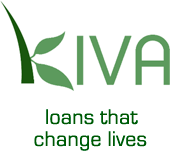[Note: Oddly enough, I had this all written up and ready to post sometime in the next few days before I even realized that Martin Luther King Day was coming up. Serendipity much?]
As I already mentioned, I’ve been reading Made to Stick—off and on, sometimes the hard copy but mostly listening to the audiobook in the car on long drives. It’s such a good audiobook that I often found myself pausing the recording to talk back to the narrator. Granted I spent four hours on the highway between Austin and San Antonio that day, but we had some good conversations. ;}
The other day, I listened up to ‘round page hundred and something. The title of that last section was Brown Eyes, Blue Eyes.
And so the narrator proceeded to tell me about a woman named Jane Elliott—an elementary school teacher in Iowa—faced with the task of explaining Dr. King’s death to a classroom of third graders. She helped them to understand discrimination in an extremely concrete way by dividing the students into groups—brown-eyed kids and blue-eyed kids. The first day, she announced that the brown-eyed kids were better than blue-eyed kids. The second day, she reversed it. Segregation was the rule; the “better” group sat in front and was told that they were smarter (the rest had to sit in the back). The down group had to wear collars that allowed their eye color to be identified at a distance. They were kept separate at recess. And that classroom of third graders acted accordingly: “I watched those kids turn into nasty, vicious, discriminating third-graders… it was ghastly.”
It’s a fascinating experiment for dozens of reasons, but here’s the part that stuck with me:
On the day when they were in the inferior group, students described themselves as sad, bad, stupid, and mean. “When we were down,” one boy said, his voice cracking, “it felt like everything bad was happening to us.” When they were on top, the students felt happy, good, and smart.
Even their performance on academic tasks changed. One of the reading exercises was a phonics card pack that the kids were supposed to go through as quickly as possible. The first day, when the blue-eyed kids were on the bottom, it took them 5.5 minutes. On the second day, when they were on top, it took 2.5 minutes. “Why couldn’t you go this fast yesterday?” Elliott asked. One blue-eyed girl said, “We had those collars on…” Another student chimed in, “We couldn’t stop thinking about those collars.
There’s a much more detailed explanation of Jane Elliott’s exercise, on Wikipedia.
Now, Made to Stick includes this story because it’s an excellent example of concrete stickiness—the kind of thing you remember for the rest of your life. (Those kids did.) But I go off on a different tangent, because this is stuff we should already know but often forget: When you feel bad, you do badly. When you feel good, you rock.
It totally kneecap’d me. (Can you tell I’ve been reading tough-guy gumshoe fiction?) Of course the kids performed better when they were on top. They were sure of themselves. They were confident. They knew they were great, capable of amazing things. “Better than” translates well to “awesome across the board”. Good feelings = great work. No doubt!
And of course the down group felt rotten. Distracted. Incapable. Lesser.
The fact that the kids did their work twice as fast when they were convinced of their own greatness didn’t really surprise me, but it reminded me how important it is to keep in mind. We tear down our kids every day. Our school systems are organized based on negative possibilities (and negative consequences). We assume that kids are irresponsible trouble-makers, and (huge surprise) we get irresponsible trouble-makers. And when was the last time you went out of your way to make sure you felt good? Pleased with yourself? Proud of yourself? (I hope recently—and often.)
Confidence and certainty feel better. It’s not just about kids. Unhappiness is unproductive. Misery takes effort. It may not feel that way, being that we’ve learned it so well, but I’m starting to think it’s true. It’s not worth it. Let it go.
Remind yourself of your inherent awesomeness. (Or you can . I’ll remind you.) Do someone else that favor, too, and make their day.
![]()
Tagged as: Jane Elliott, Made to Stick, Martin Luther King Jr., positivity











Add New Comment
Viewing 4 Comments
Thanks. Your comment is awaiting approval by a moderator.
Do you already have an account? Log in and claim this comment.
Do you already have an account? Log in and claim this comment.
Do you already have an account? Log in and claim this comment.
Do you already have an account? Log in and claim this comment.
Do you already have an account? Log in and claim this comment.
Add New Comment
Trackbacks
(Trackback URL)
February 19, 2009 at 5:53 pm
[...] I read it out of the book sometimes, and listen to the audiobook sometimes, like I did with Made ...